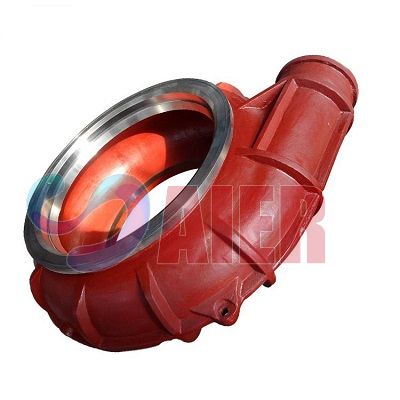Oct . 14, 2025 09:10 Back to list
Submersible Well Pump Manufacturer | Durable & Efficient
How to Choose a Submersible Well Pump Manufacturer (with real shop-floor insights)
If you’ve ever had to spec a deep-well system under a tight deadline, you know the stakes. The first thing I tell buyers is to pick a submersible well pump manufacturer that actually lives and breathes metallurgy, testing, and service data—not just brochures. Sounds obvious, but in practice… it’s not. Here’s what’s really moving the needle right now.
Industry trends I keep seeing
- Materials upgrade: duplex/SS for brackish water; high-chrome alloys in sand-laden wells.
- VFD-ready motors and tighter pump curves (ISO 9906 grade 2B acceptance is common now).
- CFD-optimized bowls/impellers to nudge efficiency +2–5% in real sites.
- Traceable quality chains: heat lot to finished bowl to final pump test report.
Product spotlight: FG8131A05 dredge pump bowl (Origin: China)
Okay, this isn’t a submersible well bowl per se—it’s a dredge pump bowl—but it’s a telling artifact of a shop’s capability. The FG8131A05 bowl shows how rigorous slurry-side metallurgy transfers to long-life well components. Many customers say this crossover is why their pumps run longer in abrasive aquifers.

| Parameter | Spec / Note |
|---|---|
| Material | High-chrome white iron A05 (ASTM A532 Class III Type A) |
| Hardness | ≈ HRC 58–65 after heat treatment |
| Wear life | Field reports show 1.5–2.3× vs. standard cast steel in slurry duty |
| Finish | Precision-machined sealing faces; shot-blast external |
| Fitment | Per drawing; custom bolt pattern/rabbet possible |
Process flow that separates great from average
Materials matter: certified heat lots; spectral analysis on every pour. Methods: resin sand casting for stability, then normalization and tempering (I’ve watched the furnace cycles—no shortcuts). NDT: dye penetrant per ASTM E165; RT/UT on critical sections when specified. Dimensional checks with CMM, then pressure or leak tests where relevant. Final docs: material certs, hardness maps, and, for full pumps, ISO 9906 performance curves.
Service life: in sandy wells, bowls built to slurry-grade philosophy often add months. Not a miracle—just fewer shutdowns. Industries: irrigation, municipal wells, mining dewatering, and, obviously, dredging.
Where it’s used (and why that matters)
- Deep agricultural wells with 100–600 ppm sand—abrasion is the killer; harder bowls help.
- Brackish coastal aquifers—prefer duplex or coated solutions to cut pitting.
- Municipal standby pumps—reliability, traceability, spare parts continuity.
Vendor comparison (quick, practical)
| Vendor | Lead time | Customization | Certs | Notes |
|---|---|---|---|---|
| Aier (China) | ≈ 3–6 weeks | Materials, bolt patterns, coatings | ISO 9001; CE on assemblies | Strong on high-chrome wear parts |
| EU Maker | 6–10 weeks | Broad; VFD sets stocked | ISO 9001; ATEX options | Premium pricing |
| US Maker | 4–8 weeks | Engineered-to-order | UL 778; NSF options | Excellent support |
Customization checklist
Alloys (A05, 2205 duplex, CD4MCu, CF8M), HVOF/tungsten-carbide coatings, wear rings, suction strainers, and VFD tuning. If your submersible well pump manufacturer shrugs at salt spray testing or hardness mapping, walk away.
Field notes and feedback
Case 1: Coastal farm well, 180 m head, sand 350 ppm. Switching to slurry-grade bowls cut repair calls from quarterly to semi-annual; energy down ≈9% after VFD tuning (ISO 9906 test sheet on file).
Case 2: Mining dewatering, fines-laden water. A05 bowl showed measured hardness HRC 61.3 average; service life extended from ~7 to ~14 months. “Not glamorous,” the maintenance lead said, “but it works.”
Certifications and standards to ask for
- ISO 9001 QMS; ISO 9906 pump performance testing (grade per spec).
- UL 778 or CE conformity for motor-driven pump sets where applicable.
- ASTM A532 material conformance; ASTM E165 PT records on bowls.
Bottom line: pick a submersible well pump manufacturer that can show metallurgical lineage, test reports, and steady supply on spares. The rest is just sales talk.
- ISO 9906:2012 Rotodynamic pumps—Hydraulic performance acceptance tests.
- UL 778 Standard for Motor-Operated Water Pumps.
- ASTM A532/A532M Standard Specification for Abrasion-Resistant Cast Irons.
-
Reliable FGD Pump Manufacturer China | Durable & Cost-effective Solutions
NewsNov.23,2025
-
Reliable fgd Pump Manufacturer Solutions for Emission Control | Aier Pumps
NewsNov.23,2025
-
Explore Advanced FGD Pump Factory Solutions for Cleaner Power Plants
NewsNov.22,2025
-
Reliable & Efficient FGD Pump Chinese Supplier for Cleaner Energy Solutions
NewsNov.22,2025
-
Reliable China FGD Pump Suppliers for Effective Flue Gas Desulfurization | AiEr Pumps
NewsNov.22,2025
-
China FGD Pump: Durable & Efficient Solutions for Emission Control
NewsNov.21,2025
